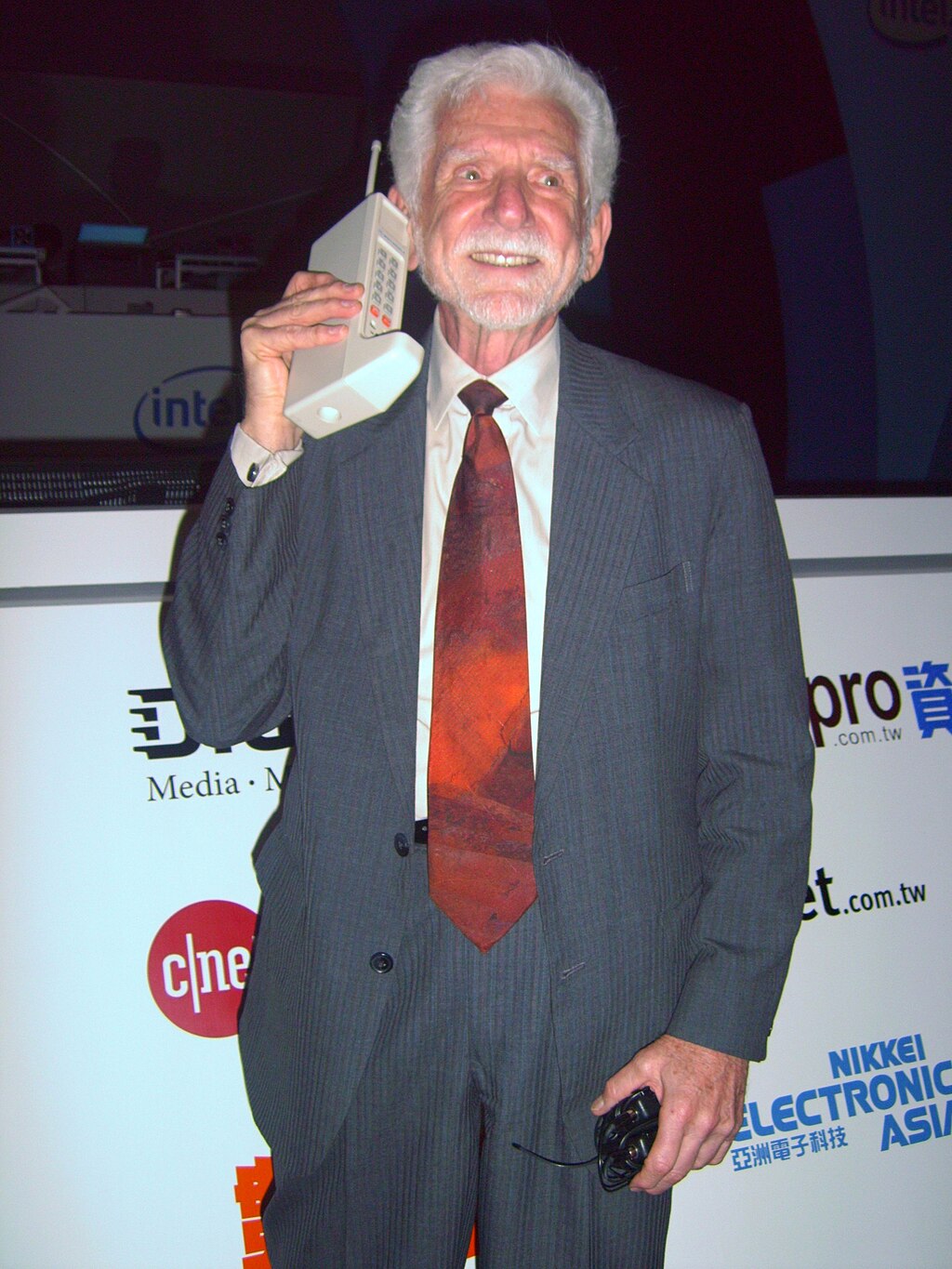You’ve probably never heard his name. Yet, he changed your life. Dr. Martin Cooper started with an idea and turned the world upside down.
Here’s where it all started
In the late 1960s, Martin Cooper designed a radio system for police officers. Typical radio systems of the day just went from the station house to the car. That was great as long as the car was fairly near the station. Rural police had problems with the signal, and really dense cities did too because of all the buildings in the way.
He had an idea, which was to put up a series of low powered repeaters and create a system where the radios would link to different repeaters as they needed to. Does that sound familiar?
April 3, 1973: the world changes

Using prototype equipment, Martin Cooper stood on the street and made a phone call. This sounds pretty common today, but this was the first phone call from one handheld device to another using cellular technology. While there were mobile phones before, they were too big to carry around and required high-powered transmitters to get to large receiving antennas. -This was the first time that handheld devices communicated through a cell network.
Of course this was just a proof-of-concept. The company that made the equipment, Motorola, spent the next ten years developing cellular technology and perfecting the first cell phone.
Where did the idea come from?
A lot of people have advanced the idea that Martin Cooper took his inspiration from Star Trek. I’m sure to some extent he did. However, he himself says he was more influenced by Dick Tracy’s wrist radio. Regardless, neither Trek nor Tracy had a cellular network and that’s what really makes the whole concept work.
The cellular network
The key to the whole thing is really the network. Cell phones aren’t much more than fancy handheld radios. The real key is the network that makes them work so well. Instead of communicating directly with a base station, there is a network of small transmitters and receivers. They’re evenly spaced like a honeycomb. When a phone is in range of a cell, the phone and cell lock onto each other. Because a phone will usually be able to lock onto more than one cell, the system can intelligently switch from cell to cell without you even knowing it.
Cellular communication is the most important part.
Cellular communication, which Martin Cooper pioneered, is really the most important part of telecommunications. Sure the wires and servers that make up the internet are important. However when you look at the number of times people communicate through their phones… you’ll quickly realize that if it weren’t for cellular communication, your life as you know it wouldn’t really exist. Before cellular communication, you stood by a wired phone and your information came from mail and newspapers.
And really, you have Martin Cooper to thank for it.
By the way, if you’re interested in the best in cellular products and accessories, give a look to SolidSignal.com.





